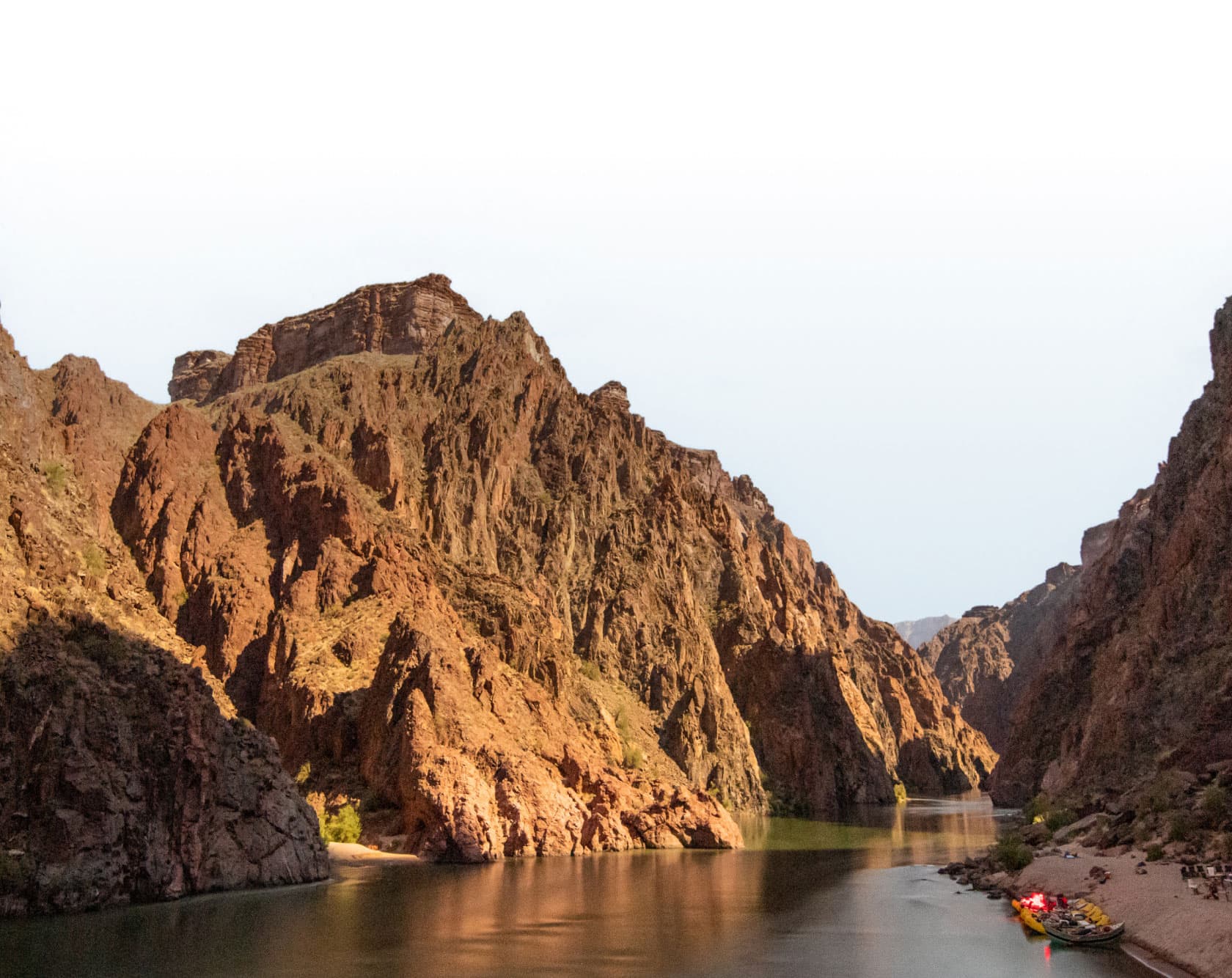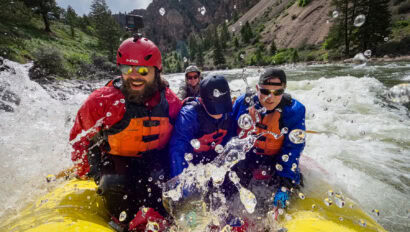8 Essential Whitewater Rafting Tips for Plus-Size Adventurers


Let me just introduce myself. Hi! I’m Ash Manning and I’ve been a whitewater rafting guide since 2015. Also, I’m a plus-size adventurer. No, I’m not Ashley Graham plus-size, I’m a large person with a belly and plenty of history of occupying a bigger body.
It can be a scary experience signing up for a whitewater rafting trip with the ever-present questions rolling around in your head like, “Will they say no to me due to my size,” or “What if something happens?” The reality of being a bigger person in the outdoor industry is honestly kind of a nightmare sometimes. The world isn’t always built for plus-size people, and if you’re one of those people, you might wonder if a rafting trip can even be an option for you. But I’m here to help.
Over my years guiding, I’ve found there are certain ways that plus-size adventurers can go about ensuring their safety and enjoyment on whitewater rafting trips. From the right questions to ask before you go to how you can be an asset to your guide, I put together a list of tips and advice that you can use to help ease your mind. Actually, a lot of this essential information can be useful for any new rafter.
Yes, rafting is for everybody

1) Acknowledge your size.
This is important. Own it! Don’t shy away from the reality of your big, beautiful body. This will make things less awkward when it comes to weight distribution in the raft. You don’t have to tell your guide your exact weight or anything, but make sure they know that you’re aware that weight distribution in a raft matters and that you won’t be offended if they need to switch up seating. As a person with more weight, you can also be an asset when it comes to certain commands, such as high-side and weight shift commands. One thing I’ve learned over the years is how to throw my weight around a boat to keep it from flipping.
2) Paddle (and Swim) Your Heart Out!
Guides like good, strong paddlers, period. Please be a good paddler. Not only is it easier on your guide when you can, “carry your own weight,” but it’s paramount for your safety, and for the safety of everyone in the boat. Paddling can help you stay in the raft better than holding onto a strap most times too. But if you happen to fall out, being able to assist in your own self-rescue is hugely important. Guides will expect you to swim aggressively to the nearest boat (or shore, in some cases) so you can get back in the boat quickly.
3) Safety gear.
If you’re nervous about gear malfunction or how gear will fit, it’s a great idea to have that conversation with the outfitter you plan on going with prior to your trip. While PFDs (lifejackets) are typically “one size fits all,” if you are plus-size…you know that isn’t the truth. PFDs are more likely to slip off if you have a bigger belly. If available, ask for a leg strap to attach to your PFD. Also, DO NOT uncinch your PFD while on the water. When it comes to cinched and tightened PFDs, it might dig into you a little bit, but it’s better to be a little uncomfortable on the water than unsafe.
Wetsuits and drysuits are sometimes awkward to assess too, and some companies may not have size-inclusive options. So, when inquiring about wetsuits and drysuits with your outfitter, ask if wearing one is necessary, highly recommended, or required. If it isn’t necessary, then it’s your choice from there. I don’t recommend going if the outfitter recommends or requires one for a specific trip or time of year (like spring) and they don’t have your size. You can wait until later in the season when air and water temps warm up, or choose a different trip so you don’t miss out!

4) Listen to your guide.
I cannot stress this enough. Your guide has your safety and enjoyment in mind for the entirety of the trip. If they’re calling commands in rapids, you should be following them. They’re trained to get you where you’re going, and get you there guardedly. Doing exactly what they say, when they say it, will result in a perfect river day.
5) Brace in.
Your guide will teach you how to brace in for rapids, but for bigger bodies, you might need to be more adaptive. This might mean using your own body to brace against the raft more than most. Communicating with your guide about bracing in is the best solution, especially if you feel like you might take a tumble out of the boat even in flat water. Before you get to the larger rapids, you want to make sure you’ve figured out how to brace yourself in the boat.
6) Speaking of larger rapids, let’s start small.
Try a Class II-III, first-timer friendly whitewater rafting trip before moving up to Class IV and V to make sure you enjoy the experience. Starting on a fun, low-stress river will help you build your confidence before diving into more demanding and challenging rapids. You can also begin to understand how to build a trusting relationship with your guide.

7) Know your limits.
There’s no indignity in not wanting to do a seven day multi-day rafting trip if you’ve never even been camping. There’s also no shame in walking around a big rapid when that’s an option and you want to take it. Respecting your limitations is crucial to your own merriment while recreating on the water.
8) Talk with the company.
Before you choose a rafting outfitter, take time to call up a few companies and have a quick chat with them. I’d suggest speaking to a manager, or a head guide about the river you’re interested in. A good outfitter will be honest and upfront about their expectations for their guests, and may ask you some additional questions to match you with the best trip. If you have any sort of medical issues, discuss that with them too. If you chit chat with a company and they completely dismiss your concerns, maybe that isn’t the right outfitter for you. You should make sure that everything feels right.
Now that you’re full of confidence and relief knowing that rafting is one of those sports that’s meant for everybody, it’s time to step up and have the adventure of a lifetime!
Related Posts
Sign up for Our Newsletter






